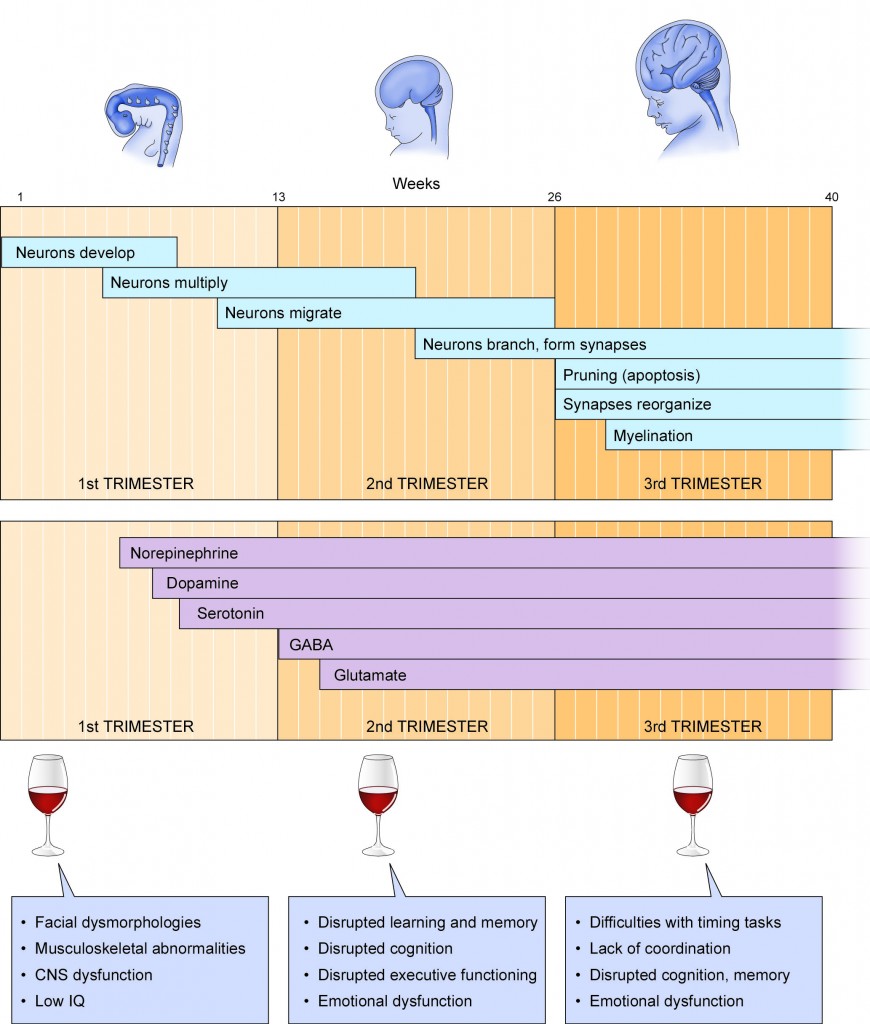Figure 9 summarizes how the exposure of the fetus to alcohol at specific times during brain development can have profound effects on neurological function and on behavior. The figure includes examples of the types of dysfunction that can be associated with drinking at specific times during pregnancy. For example, drinking early in the first trimester not only produces facial dysmporphologies, but it also produces central nervous system damage. Drinking in the 2nd and 3rd trimesters avoids facial dysmorphologies, but central nervous system damage can occur to the same extent as if alcohol were consumed earlier . Thus, there is no “safe” period that alcohol can be consumed during pregnancy without risk to fetal brain development.
Figure 9: Effects of Alcohol Exposure During Stages of Brain Development
